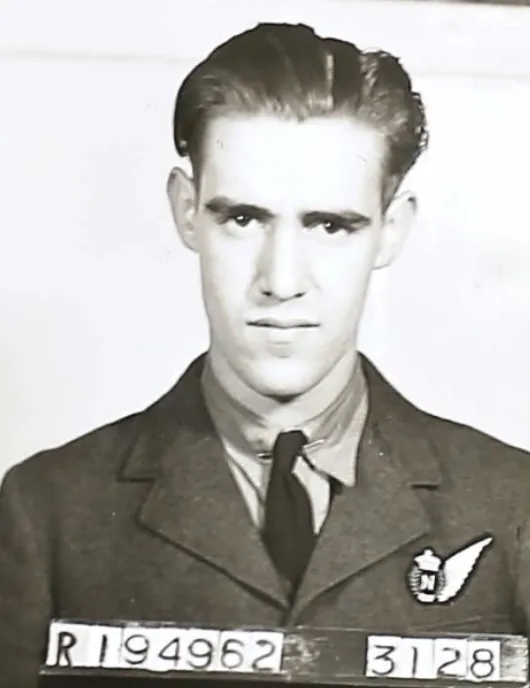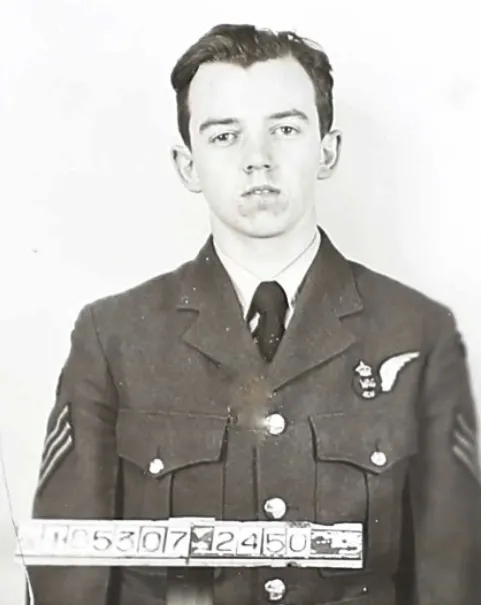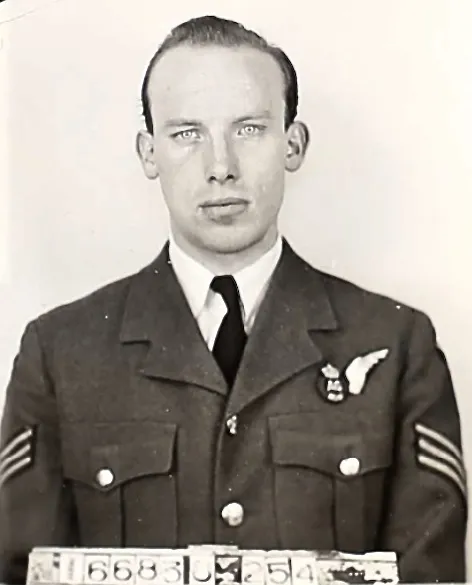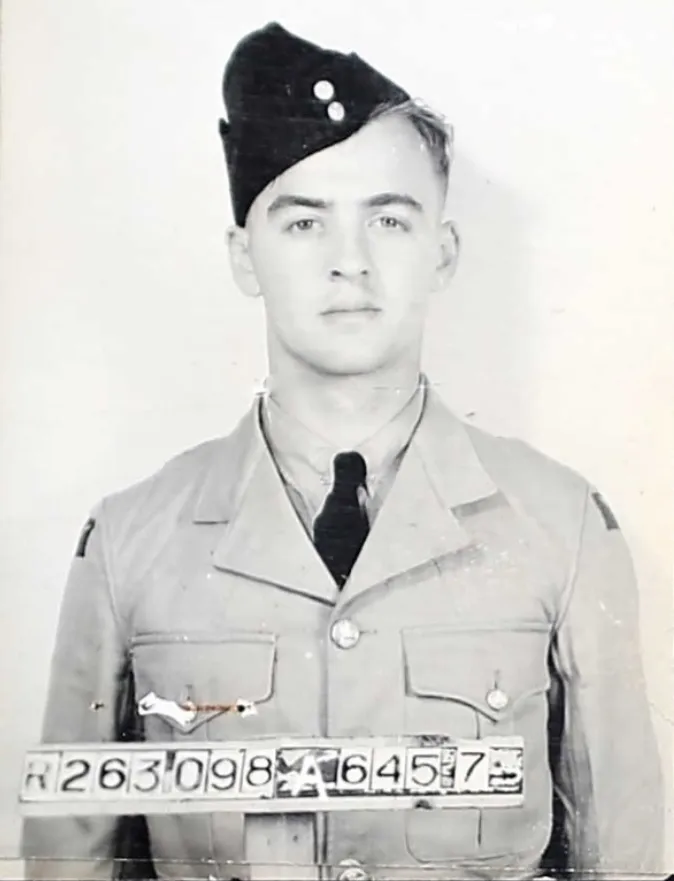Cooke, Jackson Chartis
Killed in Action 1944-11-29
Service
RCAF
Unit
103 (B) Sqn- Squadron (RAF)
Noli Me Tangere Touch me not
Base
Elsham Wolds
Rank
Flight Sergeant
Position
Flight Sergeant
Service Numbers
R/173576
Home
Target
First Burial
Addendum: - Conspicuous Gallantry Medal (Flying) - No.103 Squadron - Award effective 2 January 1945 as per London Gazette of that date and AFRO 471/45 dated 16 March 1945. Medal presented to next-of-kin, 10 December 1947. The citation reads - "One night in October 1944, this airman was captain and pilot of an aircraft detailed to attack Cologne. Whilst over the target considerable anti-aircraft fire was encountered. Just as the bombs were released the aircraft was struck by high explosive shells. Much damage was sustained. The starboard rudder controls were severed. The petrol tanks were badly pierced and the contents streamed out. Within ten minutes the petrol supply became practically exhausted. By now Flight Sergeant Cooke had reached friendly territory. He thereupon instructed the crew to leave the aircraft by parachute. As he prepared to leave himself, Flight Sergeant Cooke saw that one of his comrades still remained in the aircraft, having accidentally released his parachute inside the fuselage. Height was being rapidly lost. Nevertheless, Flight Sergeant Cooke was determined not to leave his crew member and promptly returned to the controls and attempted to effect a crash landing in a field. During his approach, with undercarriage and flaps retracted, two engines failed. Coolly and skillfully, however, this intrepid pilot achieved his purpose and effected a landing, incurring little further damage to the aircraft in his effort. This airman set a magnificent example of skill, courage and captaincy in most difficult and dangerous circumstances." Detail provided by H. Halliday, Orleans, Ontario.
Lancaster Mk.I/III PB465
Bombing Dortmund Germany 1944-November-29 to 1944-November-29
103 (B) Sqn (RAF) Elsham Wolds
On a daylight mission to Dortmund, Germany at the Cologne turning point, aircraft collided with Lancaster, PD313, 550Sqn. The starboard rudder controls were severed and the order to bail out was given. The Bomb aimer managed to escape through his hatch and the aircraft exploded immediately after he fell out. There were no other survivors.
Killed includes Cooke: Flight Sergeant James Alfred Goff RCAF R/194962 KIA Reichswald Forest War Cemetery grave 8. C. 14. Warrant Officer Class 2 Francis Ignatius Roy Bruce Hill RCAF R/185307 KIA Reichswald Forest War Cemetery grave 8. C. 13. Pilot Officer John Herbert Charles McCoubray RCAF J/95369 KIA Reichswald Forest War Cemetery grave 8. C. 12. Pilot Officer Melvin Osborne Orr RCAF J/95460 KIA Rheinberg War Cemetery grave 2. K. 17. Sergeant Edward Walter McGrath RAF KIA Reichswald Forest War Cemetery grave 8. C. 11.
POWs: Flight Sergeant G T Mortimer RAF POW (injured). Camp was not listed. Mortimer was commissioned during his time in captivity (F/O).
Lancaster PB465
Avro Lancaster
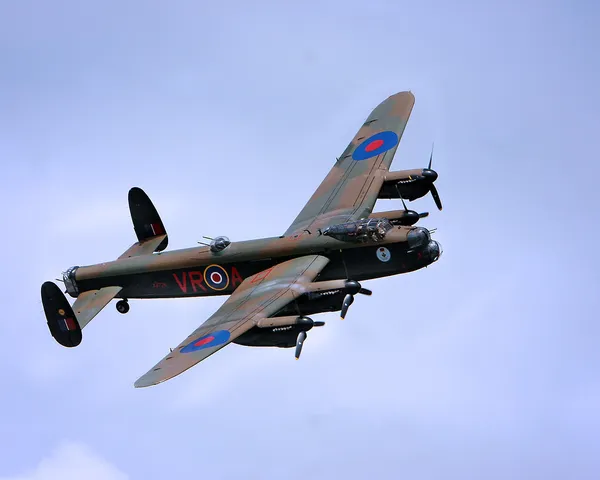
Canadian Warplane Heritage Museum
The Avro Lancaster is a British Second World War heavy bomber. It was designed and manufactured by Avro as a contemporary of the Handley Page Halifax, both bombers having been developed to the same specification, as well as the Short Stirling, all three aircraft being four-engined heavy bombers adopted by the Royal Air Force (RAF) during the same wartime era.
The Lancaster has its origins in the twin-engine Avro Manchester which had been developed during the late 1930s in response to the Air Ministry Specification P.13/36 for a capable medium bomber for "world-wide use". Originally developed as an evolution of the Manchester (which had proved troublesome in service and was retired in 1942), the Lancaster was designed by Roy Chadwick and powered by four Rolls-Royce Merlins and in one version, Bristol Hercules engines. It first saw service with RAF Bomber Command in 1942 and as the strategic bombing offensive over Europe gathered momentum, it was the main aircraft for the night-time bombing campaigns that followed. As increasing numbers of the type were produced, it became the principal heavy bomber used by the RAF, the Royal Canadian Air Force (RCAF) and squadrons from other Commonwealth and European countries serving within the RAF, overshadowing the Halifax and Stirling. Wikipedia
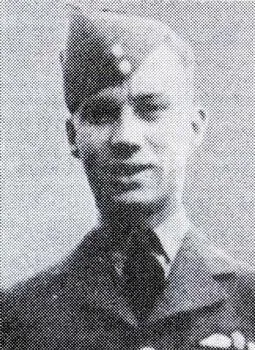

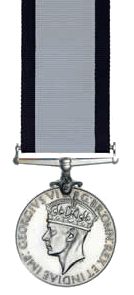
 Canadian Virtual War Memorial
Canadian Virtual War Memorial